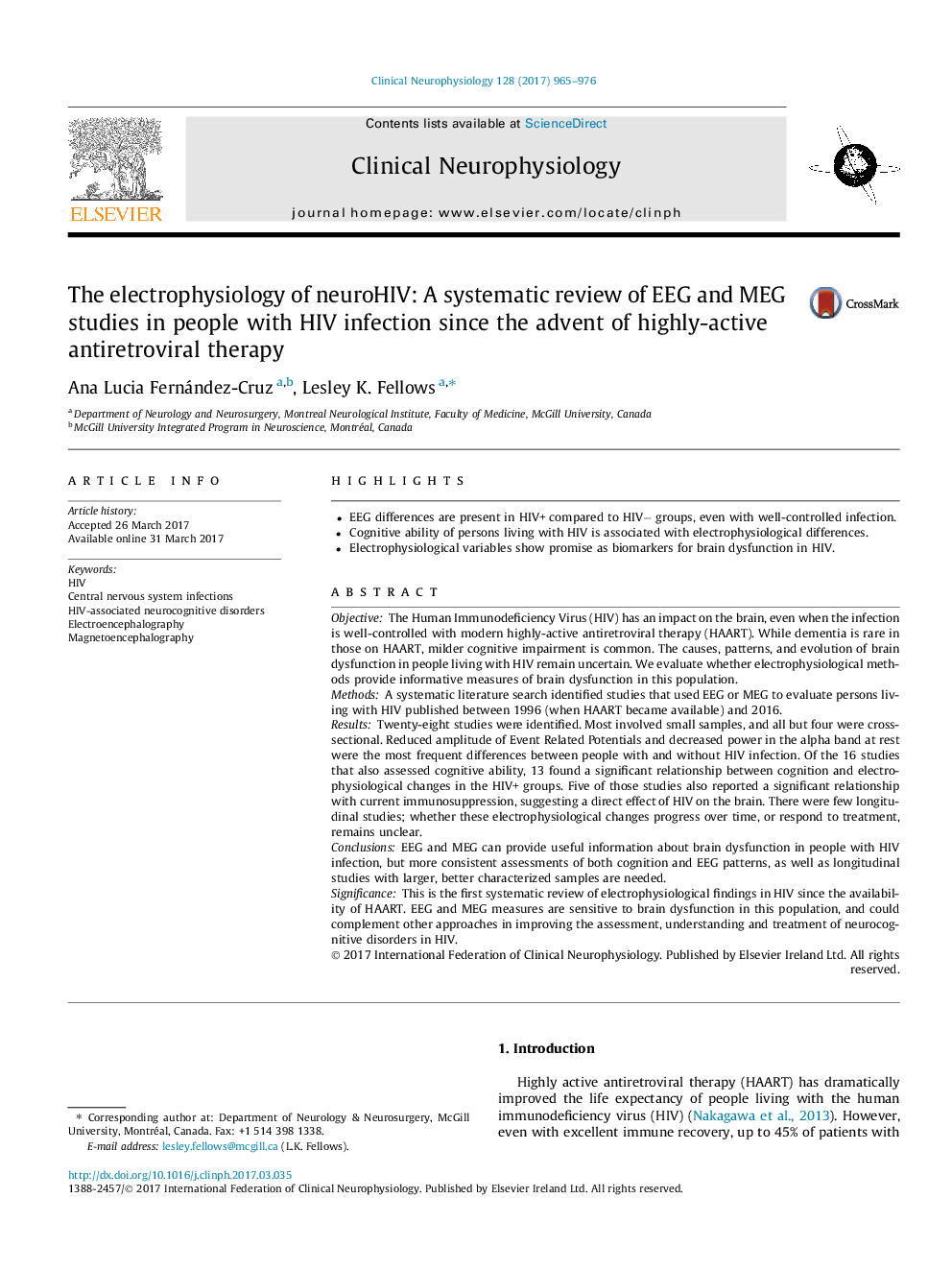| Article ID | Journal | Published Year | Pages | File Type |
|---|---|---|---|---|
| 5627909 | Clinical Neurophysiology | 2017 | 12 Pages |
â¢EEG differences are present in HIV+ compared to HIVâ groups, even with well-controlled infection.â¢Cognitive ability of persons living with HIV is associated with electrophysiological differences.â¢Electrophysiological variables show promise as biomarkers for brain dysfunction in HIV.
ObjectiveThe Human Immunodeficiency Virus (HIV) has an impact on the brain, even when the infection is well-controlled with modern highly-active antiretroviral therapy (HAART). While dementia is rare in those on HAART, milder cognitive impairment is common. The causes, patterns, and evolution of brain dysfunction in people living with HIV remain uncertain. We evaluate whether electrophysiological methods provide informative measures of brain dysfunction in this population.MethodsA systematic literature search identified studies that used EEG or MEG to evaluate persons living with HIV published between 1996 (when HAART became available) and 2016.ResultsTwenty-eight studies were identified. Most involved small samples, and all but four were cross-sectional. Reduced amplitude of Event Related Potentials and decreased power in the alpha band at rest were the most frequent differences between people with and without HIV infection. Of the 16 studies that also assessed cognitive ability, 13 found a significant relationship between cognition and electrophysiological changes in the HIV+ groups. Five of those studies also reported a significant relationship with current immunosuppression, suggesting a direct effect of HIV on the brain. There were few longitudinal studies; whether these electrophysiological changes progress over time, or respond to treatment, remains unclear.ConclusionsEEG and MEG can provide useful information about brain dysfunction in people with HIV infection, but more consistent assessments of both cognition and EEG patterns, as well as longitudinal studies with larger, better characterized samples are needed.SignificanceThis is the first systematic review of electrophysiological findings in HIV since the availability of HAART. EEG and MEG measures are sensitive to brain dysfunction in this population, and could complement other approaches in improving the assessment, understanding and treatment of neurocognitive disorders in HIV.
